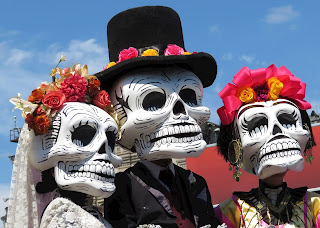Day Of The Dead
A Mexican celebration called the Day of the Dead honors the lives of departed loved ones. Its unique and vibrant celebration has gained global recognition for its striking visual elements, such as sugar skulls and marigold flowers. But the Day of the Dead is more than just a colorful festival. It is also a deeply spiritual and meaningful holiday that offers a unique perspective on death and the afterlife.
Day of the Dead customs have their origins in the ancient
indigenous cultures of Mexico. These cultures believed that death was not the
end but a transition to another life. Mexican indigenous traditions from
antiquity are the source of the Day of the Dead celebration.
The Day of the Dead they were eventually blended with
Catholic holidays like All Saints' Day and All Souls' Day. Mexicans adopted
this syncretic event as a means of embracing their Catholic religion and paying
respect to their departed loved ones.
November 1st and 2nd are designated as Day of the Dead celebrations today. Families erect altars (ofrendas) in their homes and graves on this day to greet the return of their loved ones' souls. Photographs, keepsakes, cherished meals, and flowers—especially marigolds—decorate the altars.
Because it is thought that marigolds direct the spirits to
the altars, they are referred to as the "flower of the dead".The
bright orange and yellow petals also symbolize the warmth and light of the
afterlife.
The sugar skull is another significant Day of the Dead motif. Candy with vibrant colours, and sugar skulls are frequently engraved with the names of the departed. They are both a treat for the living and a reminder of the cycle of life and death.
Families gather to commemorate the lives of their loved ones
on the Day of the Dead. It's also a time to consider passing away and the
hereafter. The occasion serves as a reminder that dying is a normal part of
life and not something to be feared. Rather, we need to honor the departed's
lives and treasure our recollections of them.
The Day of the Dead is a truly unique and special holiday.
It is a celebration of life, death, and the bonds that we share with those we
love.
view buckmart.co






No comments:
Post a Comment